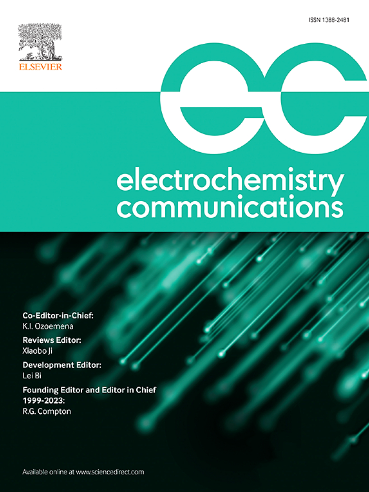三元氧化锌-氧化钨- mxenes纳米复合材料作为光催化和光电催化脱硫二苯并噻吩的高性能材料
IF 4.2
3区 工程技术
Q2 ELECTROCHEMISTRY
引用次数: 0
摘要
开发高性能的光催化材料用于有机硫化合物的脱硫是生产清洁柴油的必要条件,也是一项巨大的挑战。通过不同金属氧化物的复合材料调整电子结构和通过纳米结构形式的形态调节来改善光催化活性位点是提高光催化性能的最常用方法。本文采用简单的物理混合方法制备了基于WO3/ZnO/MXene的介孔三元复合材料。结果表明:WO3/ZnO/MXene的光电流密度(1300 μA/cm2)高于ZnO/MXene (90 μA/cm2);研究了复合材料在正己烷溶液中光催化氧化二苯并噻吩(DBT)的活性。研究了温度、反应时间、DBT浓度、溶剂、电压等关键参数对DBT脱硫效果的影响。在最佳条件下,WO3/ZnO/MXene的脱硫效率高达82.25%,高于ZnO/MXene材料。此外,与光催化和电催化方法相比,采用WO3/ZnO/MXenes光阳极的光电催化方法具有更好的性能和降解效率,在反应时间内DBT去除率为92.62%。这种对DBT光催化氧化活性的增强可能是由于多种金属氧化物的协同作用、表面积的增加、介孔结构的存在以及金属氧化物在层状mxenes结构中的均匀分布。本文章由计算机程序翻译,如有差异,请以英文原文为准。
Ternary zinc oxide-tungsten oxide-MXenes nanocomposite as a high performance material for photocatalytic and photo-electrocatalytic desulfurization of dibenzothiophene
It is of prime importance to develop the high-performance photocatalytic materials for desulfurization of organosulfur compounds, which is essential for producing clean diesel fuel and still remains a grand challenge. Tuning the electronic structure through composites of different metal oxides and improving the photocatalytic active sites through morphology regulation in the form of nanostructures are the most popular ways to enhance the photocatalytic performance. Herein, mesoporous ternary composite materials based on WO3/ZnO/MXene were prepared using a simple physical mixing method. The results showed that the WO3/ZnO/MXene exhibits a higher photocurrent density (1300 μA/cm2) than ZnO/MXenes (90 μA/cm2). The photocatalytic activity performance of the composite was investigated toward photocatalytic oxidation of dibenzothiophene (DBT) in n-Hexane solution. The effect of key parameters such as temperature, reaction time, DBT concentration, solvent, and voltage in desulfurization of DBT were investigated using the as-prepared composite materials. Under optimum condition, the WO3/ZnO/MXene revealed up to 82.25 % desulfurization efficiency, which is greater than with ZnO/MXenes materials. Moreover, in comparison with photocatalysis and electrocatalysis approaches, the photo-electrocatalytic method offered better performance and degradation efficiency using WO3/ZnO/MXenes photoanode with 92.62 % DBT removal during the reaction time. This enhanced activity toward photocatalytic oxidation of DBT can be due to the synergistic effect of multiple metal oxides, increased surface area, presence of mesoporous structure, and uniform distribution of metal oxides in the layered-MXenes structure.
求助全文
通过发布文献求助,成功后即可免费获取论文全文。
去求助
来源期刊

Electrochemistry Communications
工程技术-电化学
CiteScore
8.50
自引率
3.70%
发文量
160
审稿时长
1.2 months
期刊介绍:
Electrochemistry Communications is an open access journal providing fast dissemination of short communications, full communications and mini reviews covering the whole field of electrochemistry which merit urgent publication. Short communications are limited to a maximum of 20,000 characters (including spaces) while full communications and mini reviews are limited to 25,000 characters (including spaces). Supplementary information is permitted for full communications and mini reviews but not for short communications. We aim to be the fastest journal in electrochemistry for these types of papers.
 求助内容:
求助内容: 应助结果提醒方式:
应助结果提醒方式:


